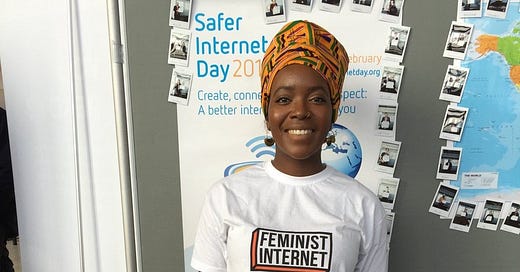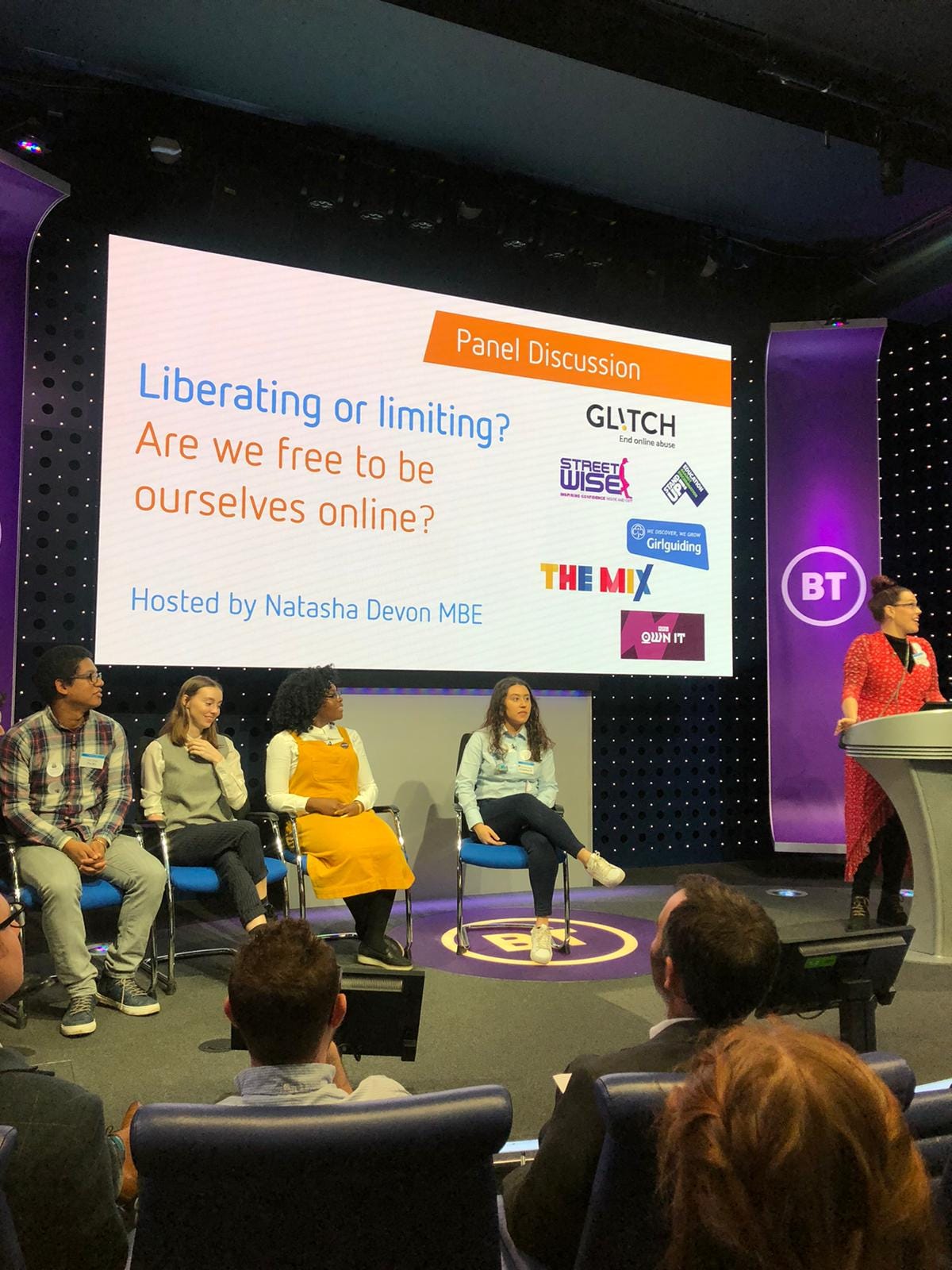Building a Responsible Tech Ecosystem for the Future
Today marks Safer Internet Day 2025, a global initiative aimed at promoting safer and more responsible use of online technology and smartphones. This year's theme is 'Too good to be true?
I know awareness days have become a bit of a fad in the social justice space, and as an awareness-raising tool, it presents challenges in measuring impact. However, since being part of #SaferInternetDay in 2017 as the new Founder of Glitch delivering digital citizenship programs in schools and for political leaders, they have been a kind, supportive, and receptive community to be part of. As a newbie expert on the UK scene with lived experience of online harms, they took on my provocations and recommendations to be more inclusive of gendered experiences of young people and consider intersectionality as a useful analytical tool when researching the compounding impacts of harm.
For example, in 2020, Childnet’s Project deSHAME conducted an intersectional analysis of how young girls were experiencing the internet. A survey of children aged 13–17 found that 25% had witnessed young people secretly taking sexual images to share, while 10%admitted to having done so themselves. This research, and the tragedy of sextortion and online scams, shows how young people—particularly young women and girls—are disproportionately affected by non-consensual image sharing and online harassment.
Fast forward eight years, and as an Advisory Board member of UK Safer Internet Centre (UK SIC), I continue to see both the power of convening and importance of such a day. There is an incredible amount of work that happens behind the scenes and there's also plenty we can learn from the children sector in curbing online harms. As democracy is increasingly impacted by technology, the responsibility to cultivate a healthier future falls not only on individuals but also on tech companies, regulators and policymakers. Today, more than ever, we need an ecosystem that empowers people, protects rights, and ensures fairness.
This Safer Internet Day, I’m sharing tips for developing and maintaining a sustainable digital citizenship practice—a key component in creating a positive digital environment. These ideas, explored in my book How to Stay Safe Online (Penguin, 2022), remain foundational as we work toward an online world where every voice is valued and protected.
What is Digital Citizenship?
Digital citizenship is not just about our digital rights; it’s also about our digital responsibilities—to each other and society. It’s about being vigilant, protecting yourself from online harms, and taking responsibility for how we engage with technology and interact with others online. This responsibility extends beyond individuals to include tech companies, regulators, and policymakers in governments. My concern, as we collectively grapple with the further "race to the bottom" (read my 2022 "I told you so" article with Yahoo News) by some tech companies, is that we’re still siloed in our thinking. With more elections still to come, we need a collective approach in shaping a responsible tech future.
#TopTechTips to Build a Sustainable Digital Citizenship Practice
One: Set, Refine, and Update Your Intentions
On an individual level, it’s crucial to define how you want to exist online and how you interact with technology from ChatGPT to Bluesky to the latest smartphone. Using Bluesky as an example, Backlinko found that "during the invite-only stage, Bluesky attracted an audience of 3 million registered users and has since grown to become a popular social media platform with over 27 million users and counting." This is a great “vote with our fingers” move against Elon Musk (remember to take your data with you!). New platforms like Bluesky offers us an opportunity to start afresh in how we shape our digital futures. How do your values guide your online interactions? Are you ensuring that your digital presence aligns with your broader values? How are we as users and more importantly digital citizens holding BlueSky who only has 20 full time employees to ensure they do not full into the unhealthy business trap of profits for people? A responsible digital ecosystem must prioritise kindness, safety, and respect.What products do we expect to make reporting of content easier, that we have great agency over our timelines and what we see? We do not want another online platform that is fuled by outrage and hate?
Two: Reflections and Check-Ins
Digital self-care is an ongoing process that is deeply connected to our role as responsible digital citizens. Regularly reflect on your all digital and tech experiences. Ask yourself: Are your interactions fostering a positive environment? Are you protecting your mental and emotional well-being? The act of pausing and reflecting is vital to maintaining integrity in a constantly connected world. Not only does this help us stay aligned with our values, but it also acts as a shield against political distractions and the disempowering forces that can derail our digital citizenship. When we give ourselves the time to reflect, we ensure we remain healthy, resilient and proactive in a world that needs positive change.
Three: Bring Your Street Smarts and Compassion
The rise of non-consensual photography and image-based sexual abuse online, exacerbated by deepfake technology and AI is a deeply troubling issue! The technology that enables perpetrators to bypass traditional methods of abuse and exploitation means that even more of us are at risk. Sextortion scams are on the rise and have led to heartbreaking suicides, particularly among young people. I’m particularly concerned with how patriarchal norms prevent young boys from speaking up and seeking help. We’ve long applied caution in offline spaces, and it’s high time we bring that same proactive approach to our digital lives. Just as we would avoid walking into a dark alley, we must be vigilant in protecting ourselves and others from online harm. Parents, caregivers, and educators must make time for open conversations about online safety with young people. Be the trusted and compassionate adult they can turn to when in doubt, upskill them with critical thinking and empower them to have agency (remember how hard it was for you to find your authentcity).
Four: Tech Companies and Regulators
In addition to recognising the harm individuals experience, tech companies and regulators have a key role to play in developing solutions that allow us, as digital citizens, to establish healthy boundaries online. I’m proud to protect the ethical frameworks as a Guardian Council of Yoti, a digital identity tech company that offers ethical, safe tech solutions, including a reliable password manager aswell as age assurance tools for companies. By encouraging platforms to integrate secure digital identity tools, we can better trust who we are communicating with- especially around age and more confidently navigate online spaces. Safe digital identity can empower us to verify our presence online and protect ourselves from scams and impersonation.
Five: Curating Positive Online Experiences
Tech companies and regulators must also assist users in curating positive experiences. For example, when Elon Musk took over Twitter (now X), we lost Block Party—a vital tool for women in public life to document online abuse and block harassment. I previously consulted with Google’s Jigsaw on their Harassment Manager tool in 2019, which was designed to help women politicians and journalists manage online harassment. Unfortunately, this tool no longer exists, evidencing the need for continuous innovation in tools that protect vulnerable groups. It also evidences the type of high impact work philanthropy must continue to fund. With generative AI becoming the new frontier in tech, I would like to see AI-powered tools that challenge harmful recommender systems—particularly those promoting hate and violence toward young people, something I spoke with Matthew Wright about on LBC Radio. I recently advised the creation and delivery og learning summit on digital democracy tools in Istanbul. I came away inspired by how AI is being deployed to advance democratic outcomes around the world, from improving political participation to addressing corruption in government procurement. These innovative uses of AI can support a safer, more accountable online space, and they also give us a glimpse of what’s possible when we take a proactive and global approach to technology.
As we continue to navigate the complexities of the digital world, the importance of the ecosystem and the role each of us plays—from philanthropy and Trust and Safety to academia and practitioners—has never been more critical. The insights and tips shared here are part of a broader, ongoing conversation about how we can create solutions that are ethical, inclusive, and effective.
For a deeper exploration of how to create responsible tech products, businesses, digital democracies, and platforms that we need and deserve, I invite you to explore my book, How to Stay Safe Online (Penguin, 2022). This book offers practical advice, real-world examples, and actionable steps to help you stay safe, secure, and engaged in a positive digital ecosystem. Buy the book to dive deeper into building your sustainable digital citizenship practice.
If you find the book helpful, I would greatly appreciate a kind and constructive review. Your feedback helps others discover these vital insights and amplifies the message of creating safer digital spaces, more responsible technology and effective digital democracies.






Great article!
We created a virtual reality experience to teach people about online manipulation and abuse.
Learn more about it at reefCARES.org!